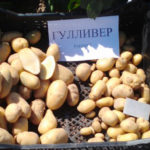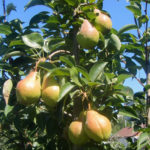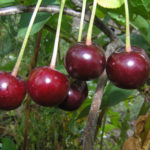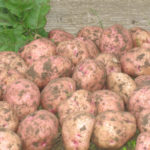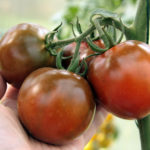Growing leaf celery from seeds
Celery is a relatively rare guest on our backyard plots, however, over the past 10-15 years, its popularity among gardeners has noticeably increased.
In culture, two types of celery are known - root and leaf, which will be discussed in the context of this article.

Some features of celery
Novice vegetable growers often complain about the “poor germination” of celery seeds and blame “negligent” sellers for this. Seeds of leaf celery are highly germinating, but for the successful cultivation of this crop, you need to know some secrets.
- Secret No. 1. The shell of celery seeds contains specific enzymes - germination inhibitors. If there were no inhibitors, in conditions of high humidity, crumbling seeds could germinate, and immature seedlings would die with the onset of frost. By the spring, the inhibitors are completely destroyed, and with the onset of favorable conditions, the seeds sprout.
- Secret number 2. When growing leaf celery, the ambient temperature plays a significant role. The optimal temperature range is from 18 to 21 ° C - under such conditions, celery develops a chic rosette of leaves. In the case of prolonged exposure to lower positive temperatures (10-12 ° C), the plants will develop flower stalks.
- Secret number 3. Among garden crops, there are many representatives of the celery family (formerly - umbrella) - these are parsley, dill, carrots, parsnips and others. Obviously, representatives of the same family can be affected by common diseases, therefore, it is necessary to allocate "clean" areas for celery, that is, those where related crops were not grown last year.
- Secret number 4. Celery seeds are classified as photosensitive, that is, they germinate only in light.
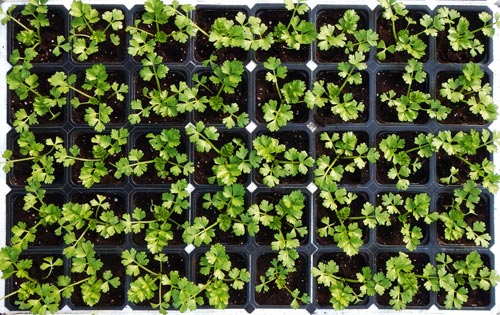
Presowing preparation and sowing of seeds of leaf celery
Seed preparation for sowing begins with soaking them in melt water in order to remove germination inhibitors. You can prepare melt water in the refrigerator, first freeze it, and then melt the resulting ice. You can prepare melt water in winter by melting ice or snow - this is ideal.
During the soaking process (the duration of the procedure is 10-12 hours; maximum - a day), it is necessary to replace the liquid every hour, alternating melt water with a solution of potassium permanganate, which greatly accelerates the oxidation and destruction of inhibitors.
At the end of the soaking, the seeds are germinated on a moistened canvas rag. As a rule, within 24 hours, some of the seeds are pecked - this is a signal for sowing.
As mentioned earlier, celery seeds germinate in the light - they cannot be buried deep in the ground. Seeds are sown on the prepared surface and lightly pressed, pressing into the ground. It is permissible to sprinkle the seeds with a small layer of inert material (sand, vermiculite, perlite).
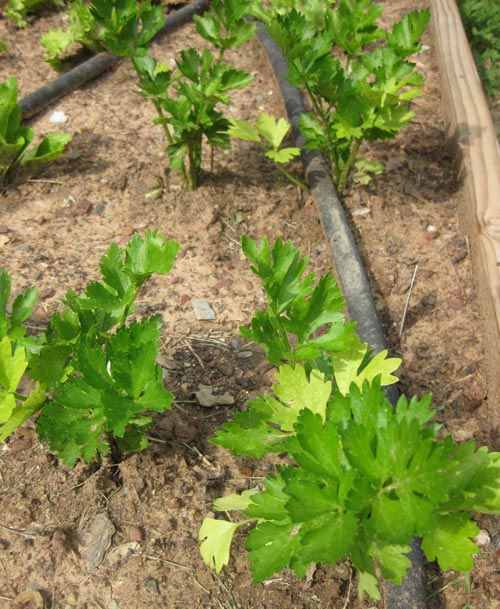
Few people know that there is a unique technique for processing photosensitive seeds. The essence of the method is irradiation of swollen seeds with red light with a wavelength of 660-670 nm. As a light source, you can use special phyto-LEDs, both red and full spectrum. For irradiation, 2-3 hours are enough, after which the seeds are sown and sprinkled with soil (the permissible layer thickness is up to 1 cm).
For the successful development of seedlings, it is required to create a "greenhouse effect" - to cover the sowing containers with plastic wrap or glass. However, experienced vegetable growers use nonwoven materials such as spandbond for this purpose, which greatly reduces the labor intensity of growing seedlings.Shelters made of polyethylene or glass have some disadvantages. The glass does not allow infrared (heat) rays to pass through, as a result of which there is a danger of overheating. It is also quite hot under the plastic shelter, and at night the temperature in the greenhouse is comparable to the outside temperature. When using a spandbond, this effect is not observed, in addition, it is possible to water without removing the shelter. Under favorable conditions (t = 19-24 ° C), seedlings should appear within 2 weeks.
Growing leaf celery through seedlings
There are several ways to grow celery through seedlings:
- sowing (or picking) in peat cups (tablets);
- diving into greenhouse soil;
- "Combined pick".
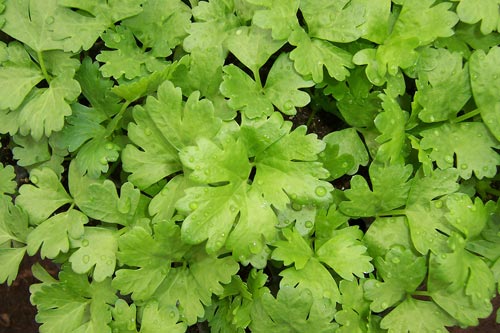
- It is advisable to resort to the first method with a limited supply of seed. The essence of the method is sowing seeds (or picking seedlings) into peat, peat-humus cups / tablets. When using this method, the root system of the seedlings is practically not damaged, therefore the survival rate is almost 100%.
- The second method involves transplanting seedlings in the phase of 2 true leaves into the greenhouse soil; the distance between plants is about 5-7 cm. This method has disadvantages - partial damage to the roots when planting in open ground, as well as the development of a superficial root system, and as a result, the need for strict control of the soil moisture regime.
- The third method involves planting seedlings directly into open ground and it is advisable to use it if there is a sufficient supply of seed. For convenience, it is recommended to sow in rectangular trays with a depth of about 7 cm. Before planting, the soil is cut into cubes with a sharp knife and transplanted into open ground with a lump of earth. Subsequently, thinning is carried out, removing the least developed plants and leaving 2-3 of the most powerful. The "combined pick" is carried out after the onset of stable heat, when the night temperature does not drop below 9 ° C.
Seedlings of leaf celery are planted according to the scheme 10 × 30 or 20 × 20.
Leaf celery care
For leaf celery, it is necessary to allocate low-lying areas with a shallow groundwater bed, as well as ensure timely watering.
To obtain a decent harvest, it is recommended to feed the plants twice with a fertilizer mixture (superphosphate - 45 g, potassium sulfate - 20 g and ammonium nitrate - 15 g; per 10 liters of water). The first time they are fed 2 weeks after planting in the ground, the second time - after 30-40 days. It is desirable to carry out top dressing after each cutting of greens.
Leafy celery is often attacked by snails and slugs, so special poisonous baits must be used to combat these pests. Do not neglect folk remedies, for example, dusting the soil with hot pepper powder, etc.
Leaf celery is harvested 2-3 times per season.

